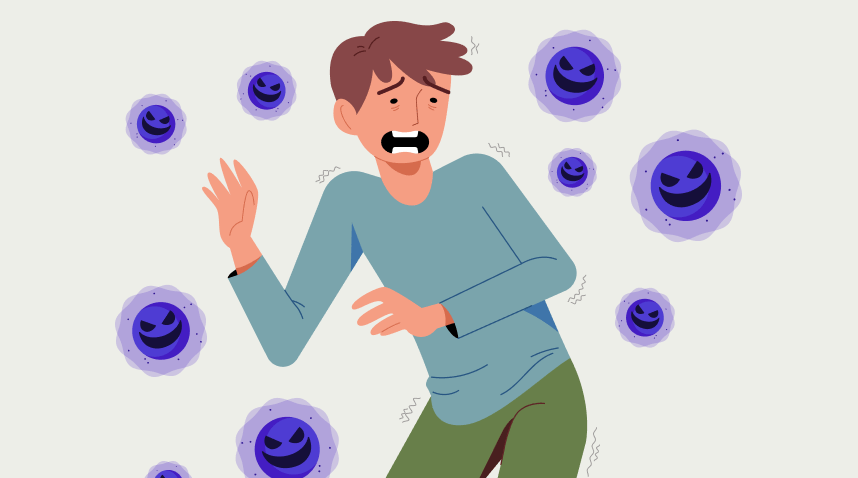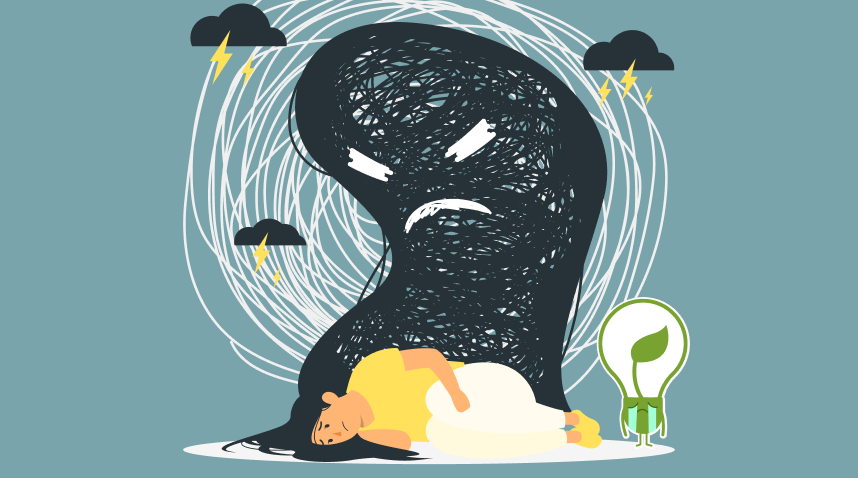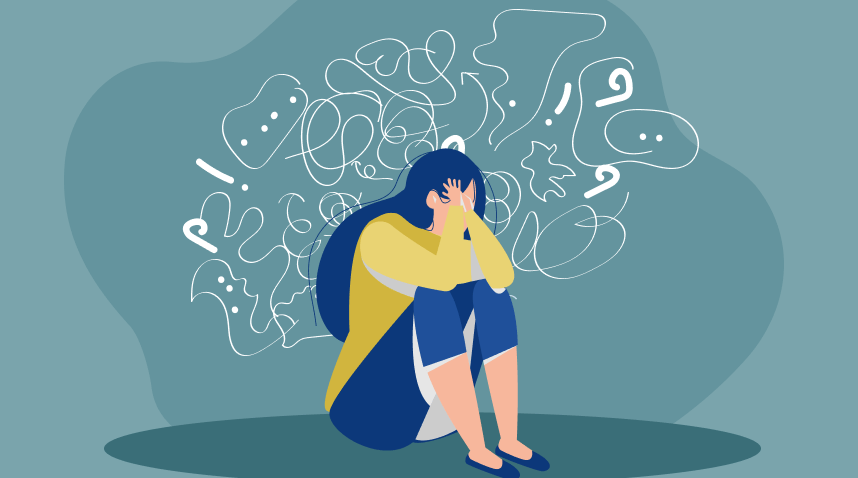TLDR: It is important to speak up about taboo topics such as mental health conditions as representation is important. Rachel shares about how she resonated with Mingyur Rinpoche when he spoke about his own panic attacks.
A monk and his panic attacks

One of the most impactful monastic sharing took place during the second day of the 12th Global Conference on Buddhism. It was a conference that brought together Buddhist speakers and participants from across the world, that took place on the 16th and 17th December 2023.
It was there when I heard Yongey Mingyur Rinpoche, who was born in Nepal, share about his panic attacks.
I have never before heard any person who was ordained share about their mental health problems in my 5 years of venturing into Buddhism, so it was particularly striking to me when he put out his moment of vulnerability on stage.
He opened his dhamma talk by sharing about how he learnt meditation from his father at the age of 9. The reason was due to his panic attacks.
Apparently, since the age of 7, he had been experiencing panic attacks, even though he didn’t know that was what they were called. He just had severe heart palpitations and went to see a whole host of doctors, all of them telling him he was alright.
“They are not good doctors!” he incredulously proclaimed, to the laughter of the entire hall.
He continually felt like he was having a heart attack, and one day, he went to the big city hospital in Kathmandu, the best in town, and the best doctor in town also told him that his heart was working perfectly fine.
“He was not a good doctor too!” he continued, to much mirth in the audience.
Finally, his mother figured out that he had a problem, and told him to get his father, himself a well-respected Buddhist teacher, to teach him how to meditate in an attempt to help with the panic attacks..
The very next day, he was surprised to find that his father approached him instead, (turns out his mom had encouraged his father to do so), and there began his journey in meditation.
Me and my panic attacks

I resonated with this story by Yongey Mingur Rinpoche because as a person who’s suffered from panic attacks after her breakup with her first girlfriend at the age of 31, I too kept going to the doctors at the various Accident and Emergency (A&E) units.
Both times they did an electrocardiogram (ECG), a simple and fast test to evaluate the functioning of the heart, and declared that I was alright and was not suffering from a cardiac arrest.
I unfortunately could not access Xanax (a fast-acting, potent tranquilliser that is a medication used to treat panic attacks and anxiety disorders) through A&E but got some from my psychiatrist later.
I felt helpless and hopeless in the face of my panic attacks.
Xanax was supposed to help with the immediate relief of symptoms of panic attacks and allows the patient to have feelings of calmness as it calms the body’s overactivity in a short span of time.
However, because the patient can develop an addiction to it, psychiatrists often only give the bare minimum before the next consultation.
The panic attacks always came unannounced and unanticipated. I would be in the middle of the work day and then would experience a sudden burst of heart palpitations and shortness of breath, and find myself unable to continue with the rest of the work day. It was debilitating and embarrassing.
After repeated visits to the psychiatrist, paired with skilled psychotherapy from a skilled therapist, together with time, my panic attacks eventually receded.
Unhelpful mental health advice

Once during a Dhamma sharing, a layperson told me to meditate when I have panic attacks instead of taking Xanax. Unfortunately, that was something I had tried to do but failed. I have been unable to sit down and be still in the middle of overwhelming anxiety.
I felt unable to articulate how I felt in the middle of this session, and felt as if I wasn’t being listened to. As my anxiety levels continued to rise when she continued dispensing advice, I decided to clam up about my experience.
It might seem counterintuitive to say, but dear reader, I was a beginner just stepping into Buddhism when the layperson gave me that advice to meditate when my heart was racing.
It was impossible then on a physical, psychological and spiritual level.
The reason is simple – I was not ready.
It took a long time for my body and my mind to settle—years in fact.
It took multiple sessions of therapy with trained and licensed therapists to help with the underlying issues that lay at the root of these panic attacks.
I am also grateful to my spiritual friendships created in the Medical Dhamma Circle where we met weekly for Dhamma sharings and conducted mini-meditation sessions of 5 minutes to 20 minutes in a safe space held by medical professionals.
This was helpful for me to learn that meditation did indeed reduce my general anxiety levels, and I began to incorporate it into my daily life using the Headspace app at first, and when that got too expensive, with a free app that Venerable Jue Wei developed and introduced to me.
One’s daily practice is important, because when it comes to the difficult times, that is precisely when the effects kick in.
It was really gratifying to hear from a dear Dhamma sister, who is trained as a nurse, when she shared that it made sense to not be able to meditate when one is highly distressed. I had, after all, tried to and failed.
It made an even bigger impact when Rinpoche shared that on stage.
Today, I no longer need Xanax, and like him, meditation has helped tremendously over the past 5 years of practising.
It may sound like a contradiction, but I suppose one has to have a stable physiology, with neither a racing heart nor a racing mind to be able to meditate. Xanax helped curb my panic attacks and gave me the clarity of mind to attend meditation classes.
A constant daily dose of a mood stabiliser, till this day, has ensured that my mind is calm and stable. Meditation is an additional layer that provides a constant grounding throughout my day, as my mental constitution is quieter and calmer. Both meditation and medication go hand-in-hand for me, and I am thankful for both.
But I can see the dilemma for the beginner meditator who is given advice contrary to standard medical advice as there is a huge resistance in spiritual communities sometimes toward external methods of calming the mind.
I am not sure how it works for others, but pairing both medication and meditation is what has worked for me.
Therefore, I realised that representation is so important. And talking openly about issues surrounding mental health-related conditions, especially when one is diagnosed, is so important.
The importance of representation
Earlier in a 1-day retreat led by Venerable Damcho, I made some new friends and was sharing with a Dhamma sister that I have been diagnosed with bipolar disorder for the past 13 years. I was just chatting about the memoir I wrote to help people navigate the mental health landscape in Singapore, when the most surprising thing happened.
She too shared about her condition.
I have come to observe over the years that it is vital to have ordinary people share their ordinary stories about their “taboo” conditions because that is precisely what gives people hope. And that’s exactly why I wrote my memoir.
In my earlier days as a member of a different religious group, I was told that one’s faith would make you well. “Go out and get some sunshine,” a religious leader once admonished. “Pray and believe,” he continued.
While I have no doubt that great faith can heal a person, sometimes it makes sense that medicine can be useful too.
In my half a decade attending weekly Dhamma talks and meditation lessons, it was only after hundreds of sessions before I encountered Yongey Mingyur Rinpoche’s sharing on panic attacks. With my Dhamma sister who had a similar mental health condition, I realised too, that because people in religious circles shy away from talking about this, that representation is truly very important.
Speaking up can help another feel less alone, whether you are the speaker of a dhamma talk, or just sharing your journey with a spiritual friend over a meal after a meditation class.
Similarly, today, even with a regular meditation practice. I am still medically compliant, taking one mood stabiliser every night as prescribed by my psychiatrist for my mood disorder.
I believe that science and faith can work well hand in hand.
We don’t have to choose one or the other, and doing so can unfortunately be very harmful to an individual who is diagnosed with mental health conditions.
Conclusion
I would like to thank Yongey Mingyur Rinpoche for his open and honest sharing. And I hope that going forward, more people will be brave enough to share their otherwise “taboo” stories in an effort to dispel stigma and also to give hope and light to those around them.
Peace.


